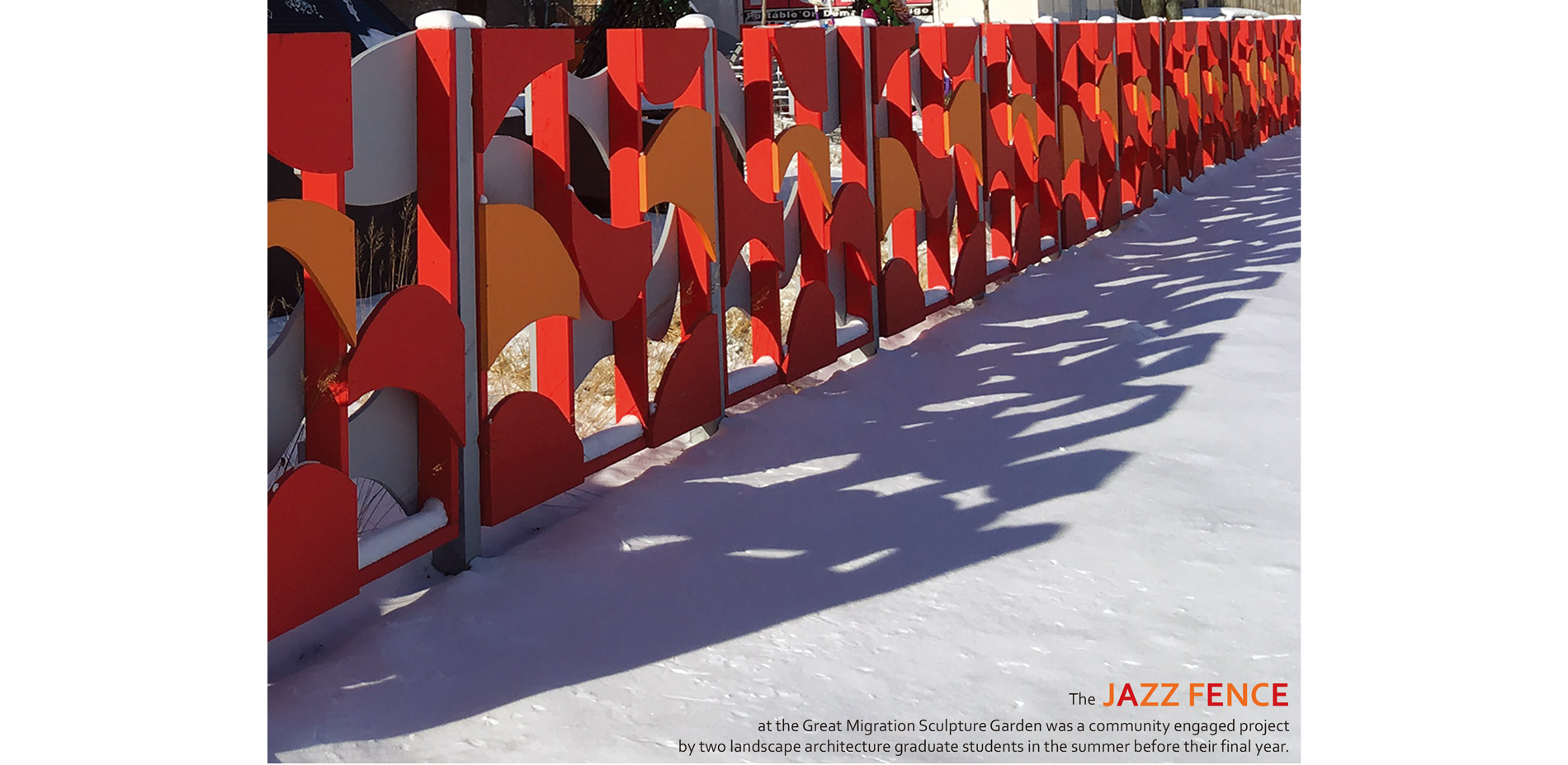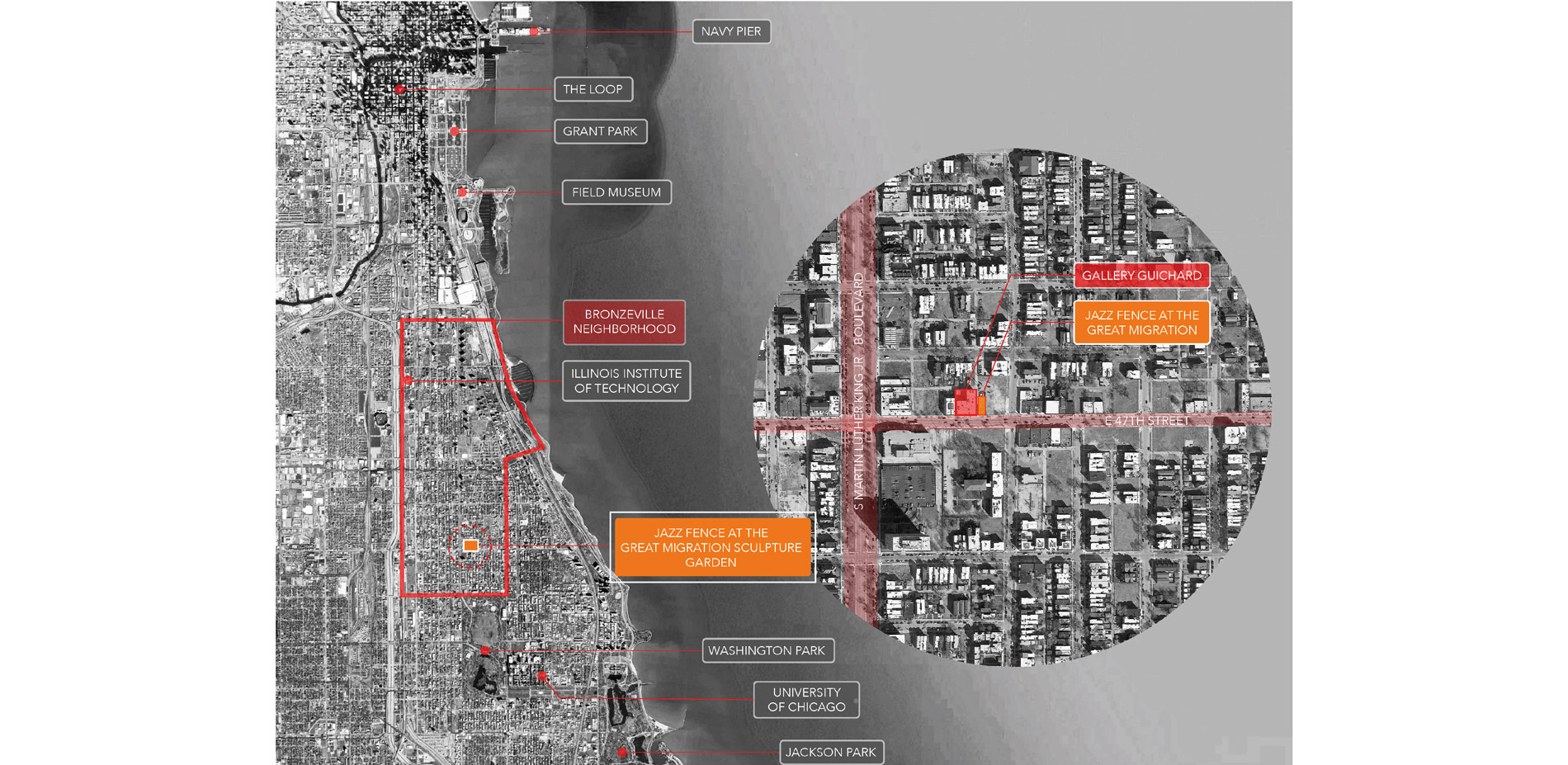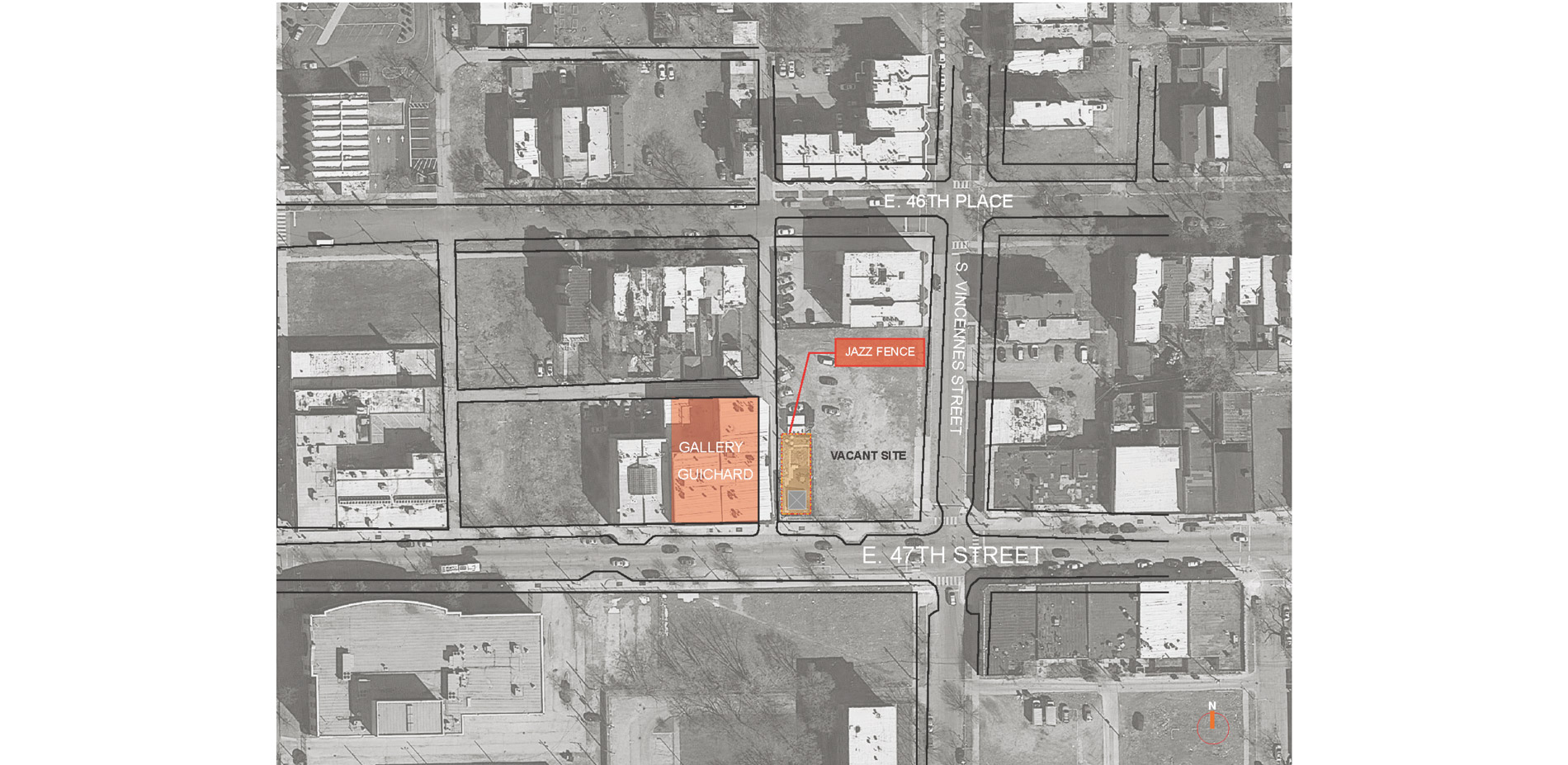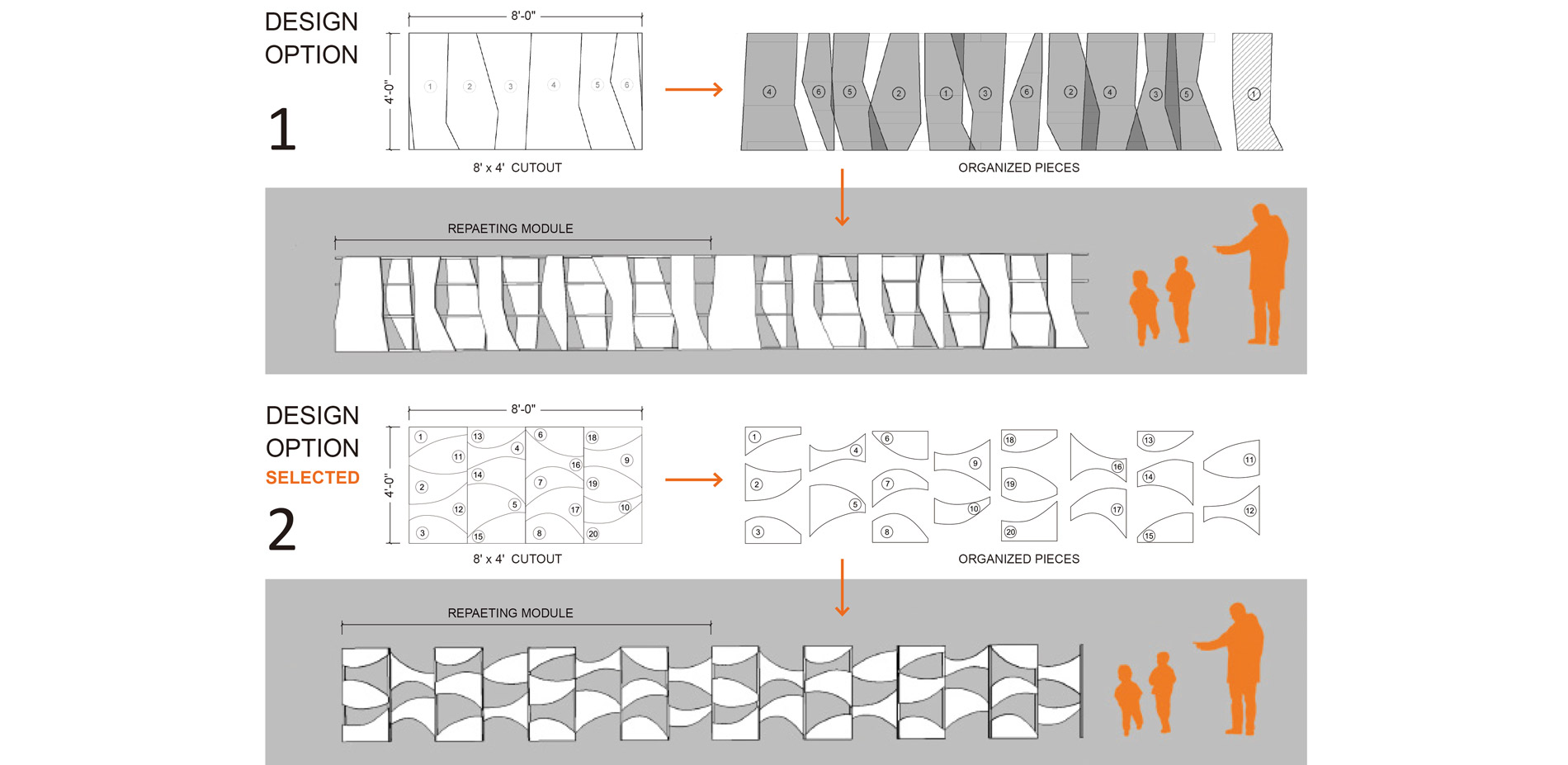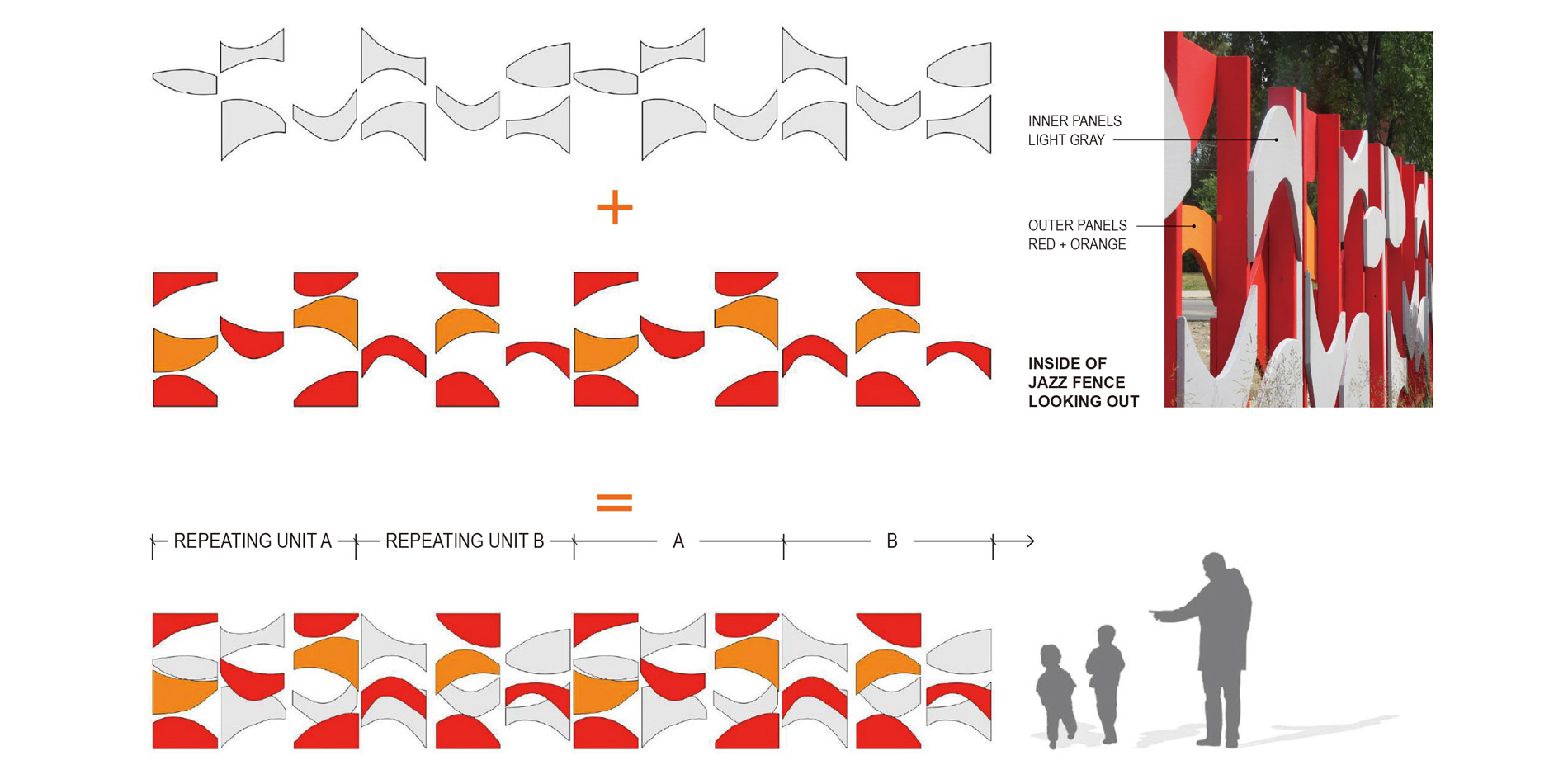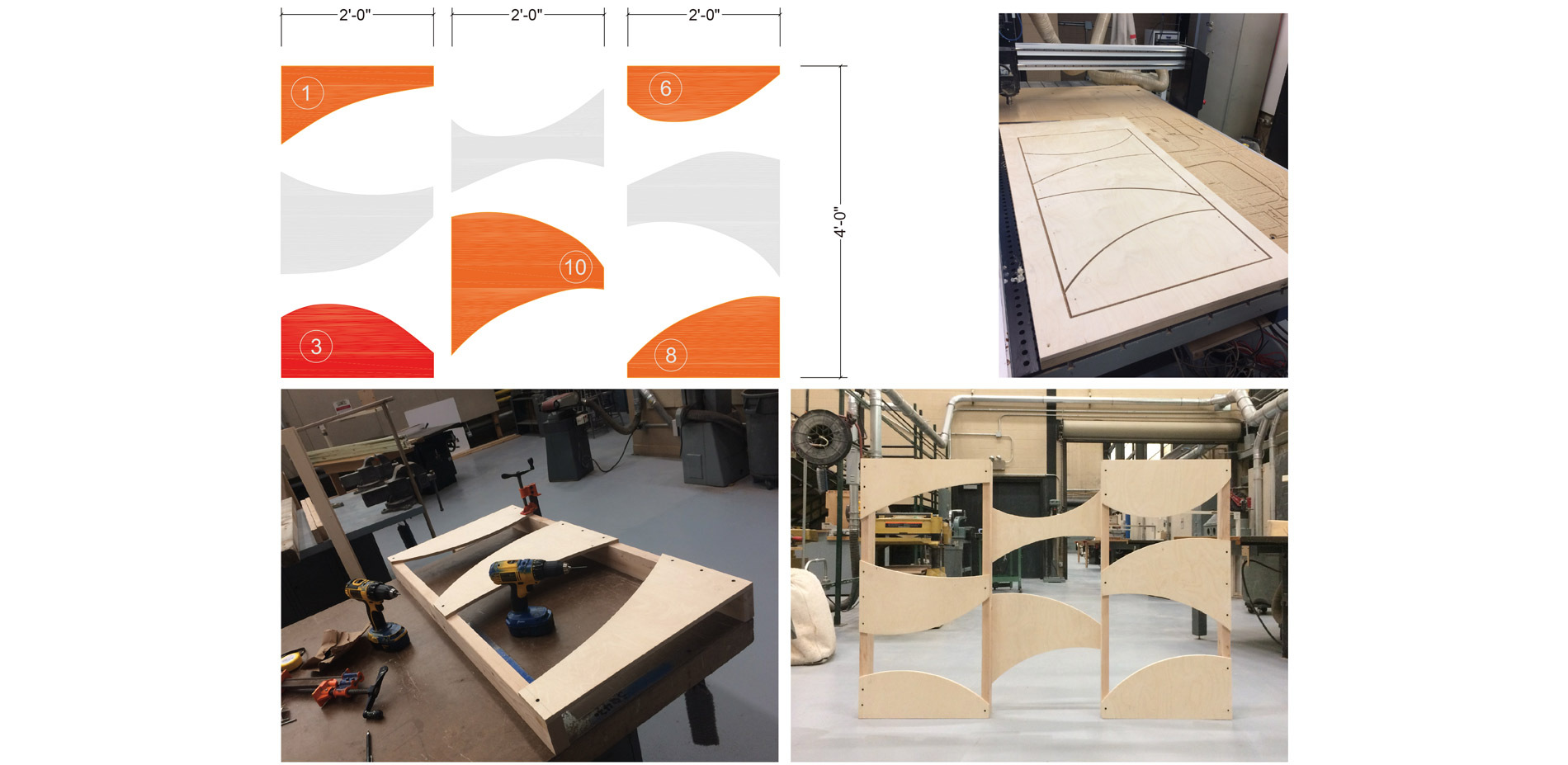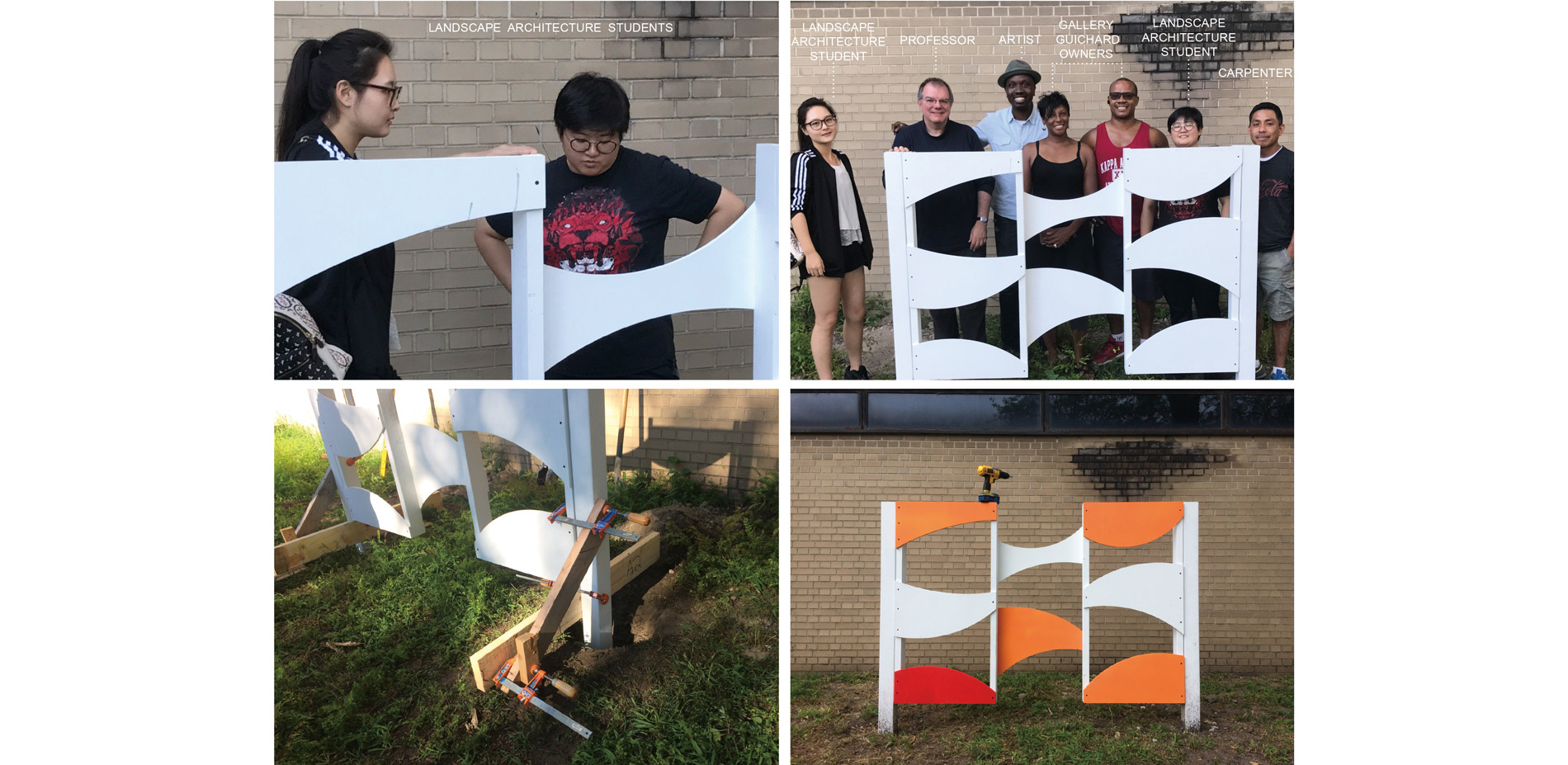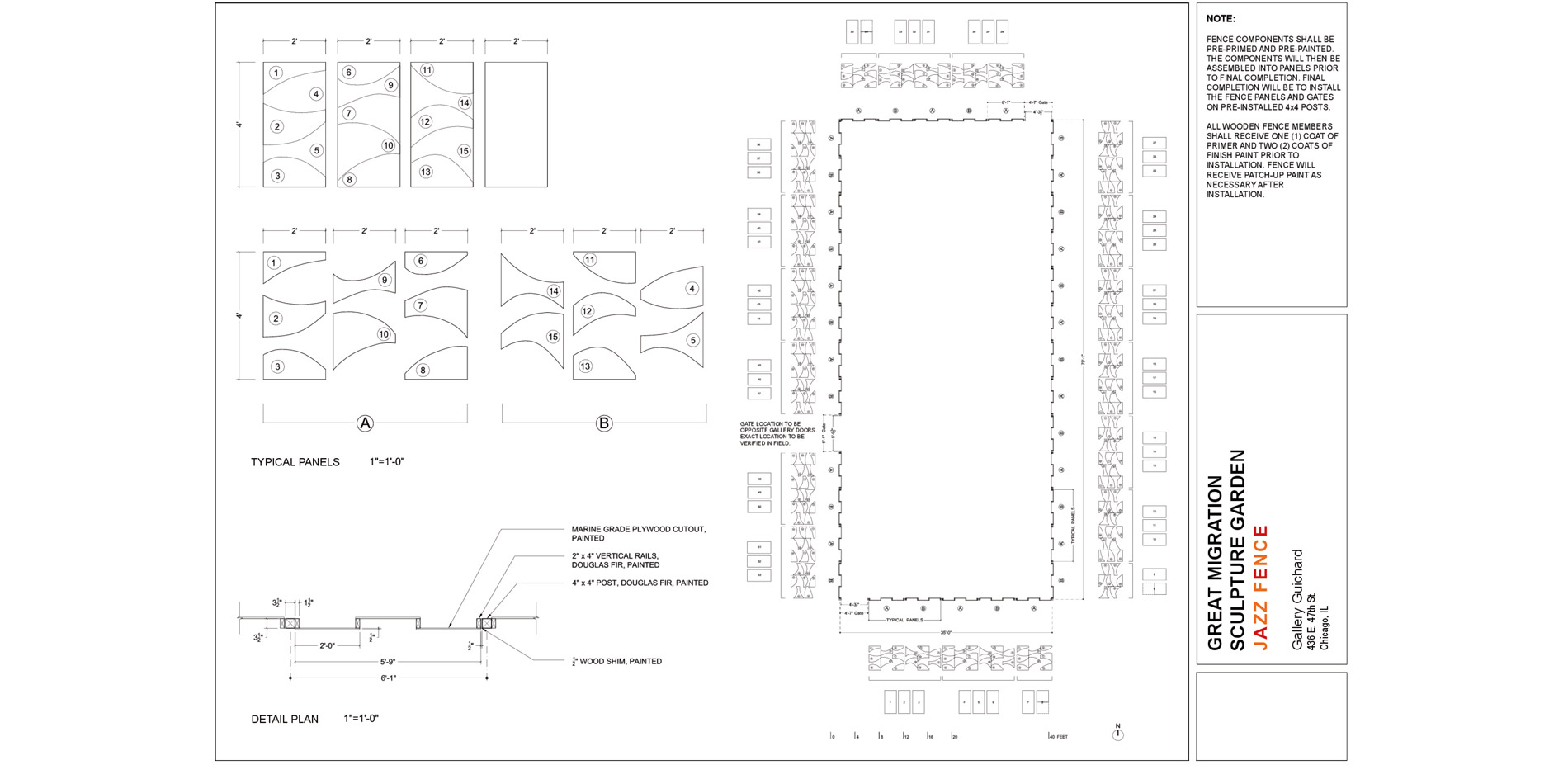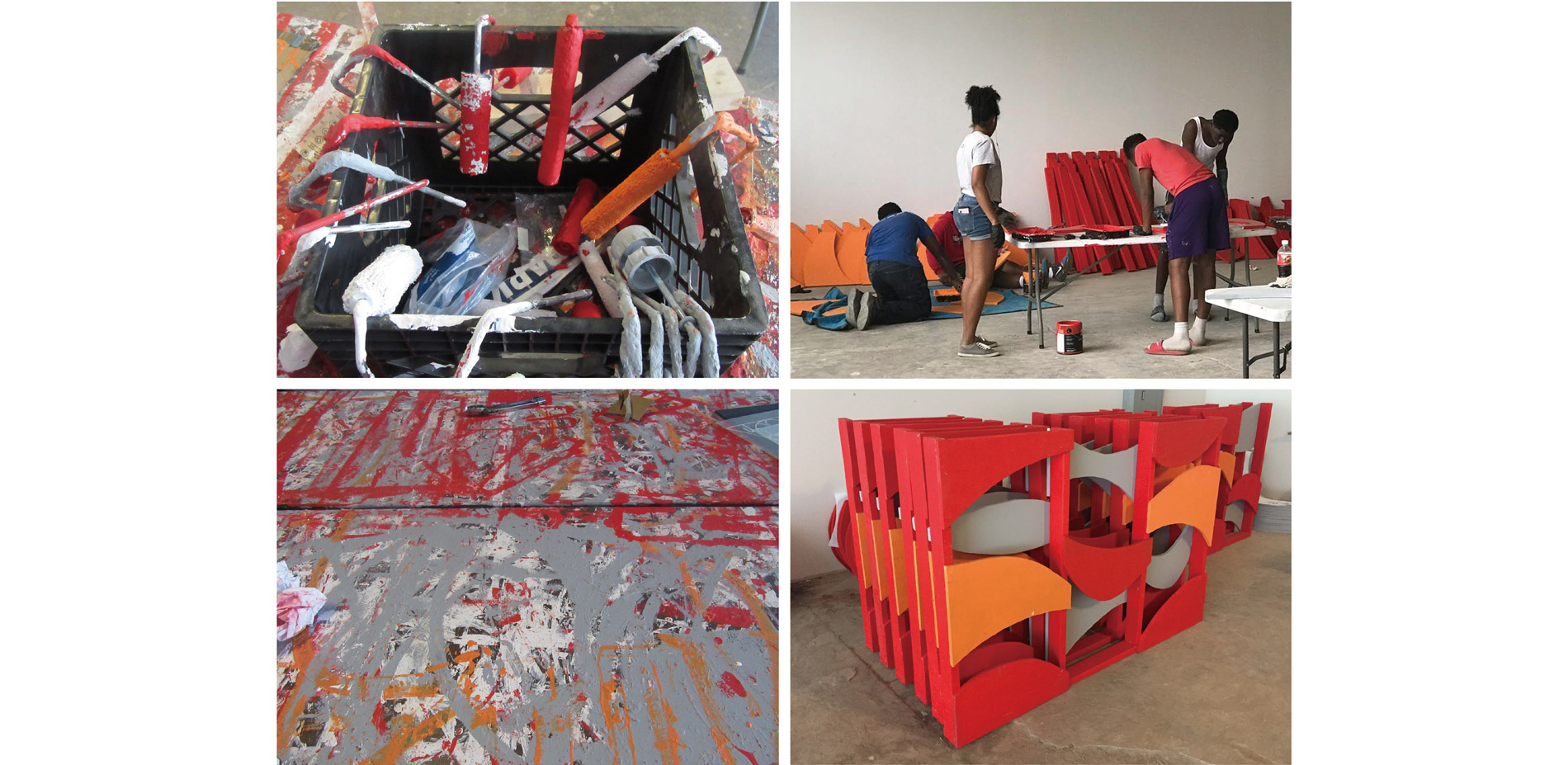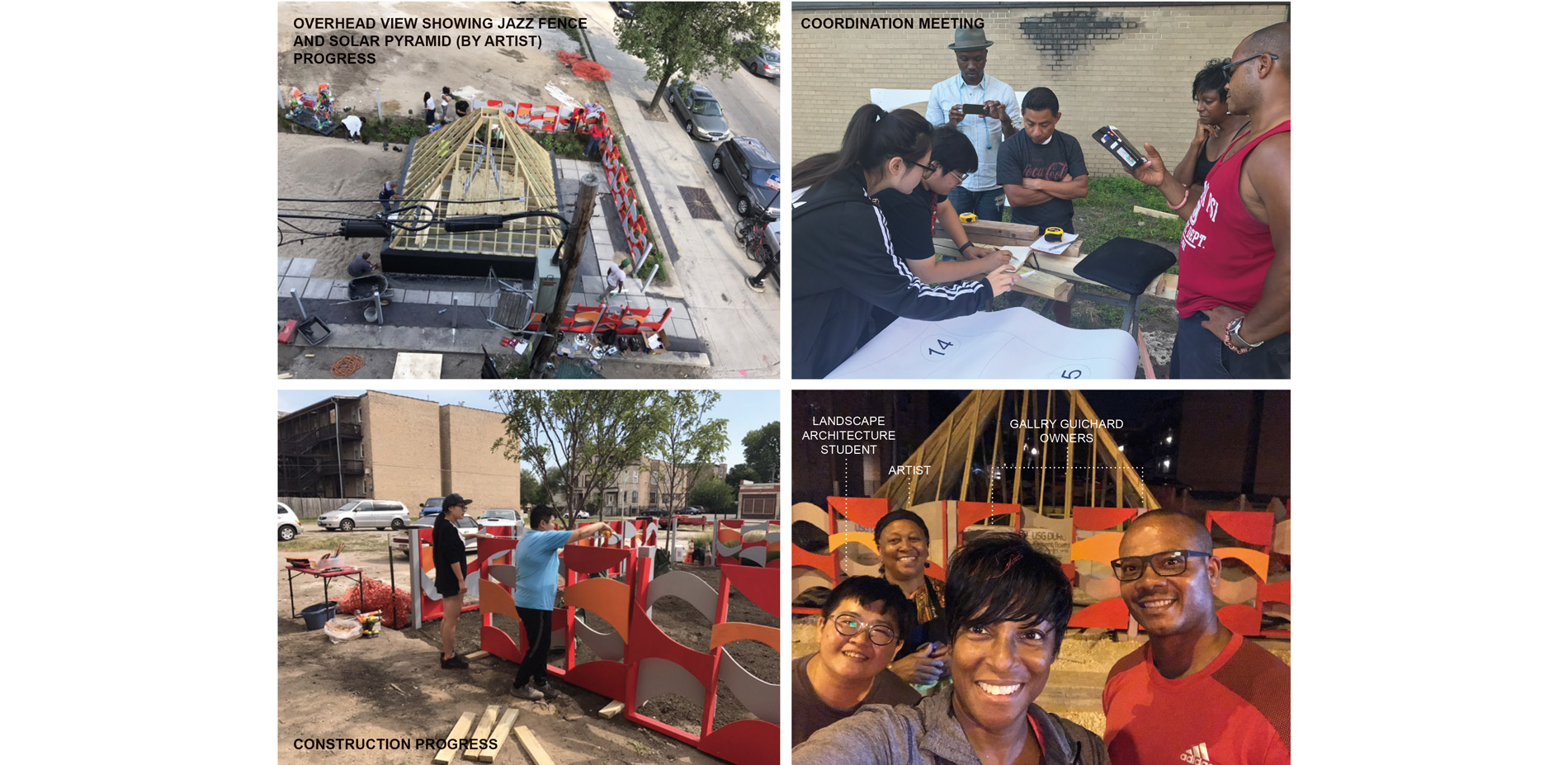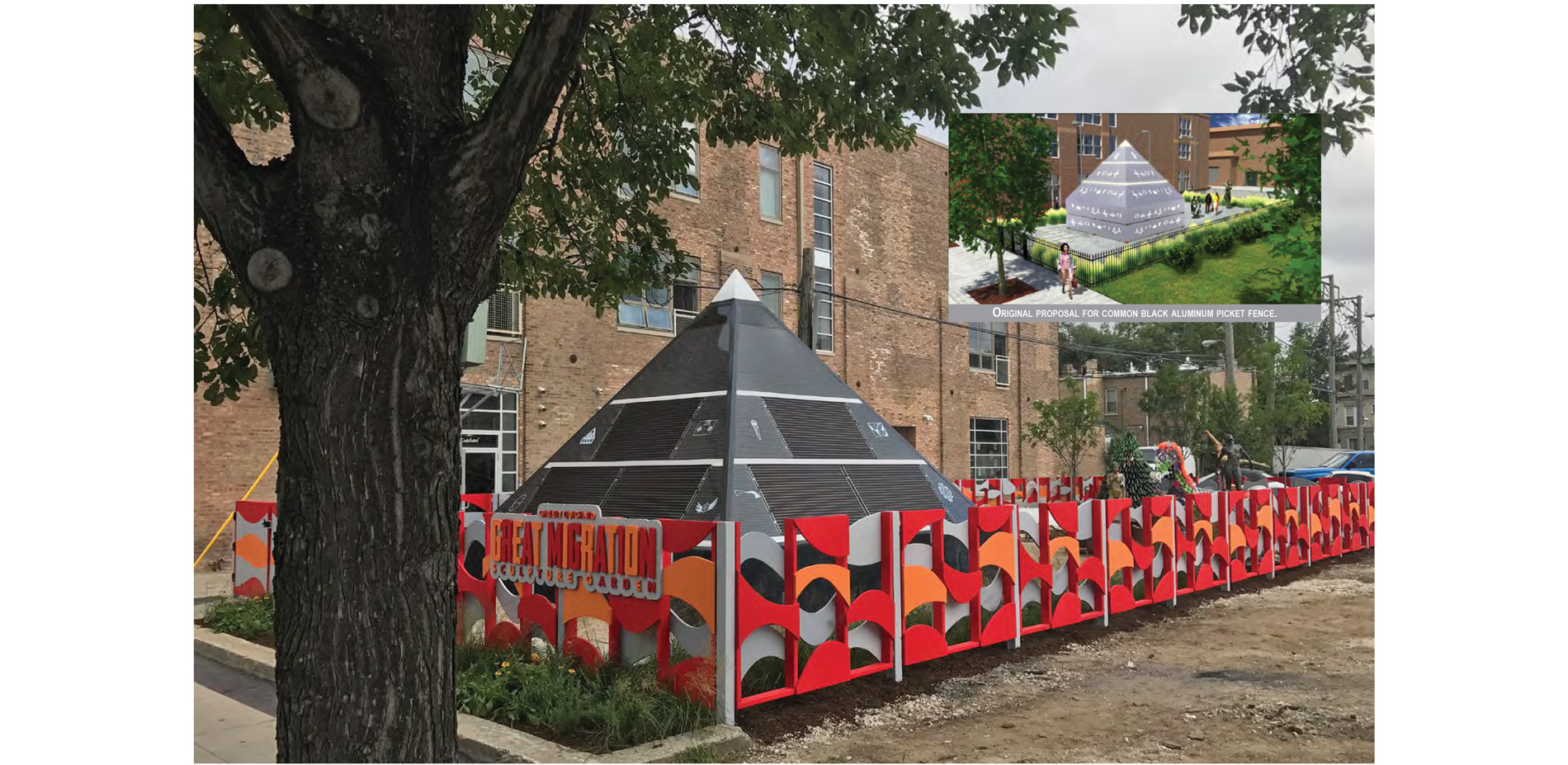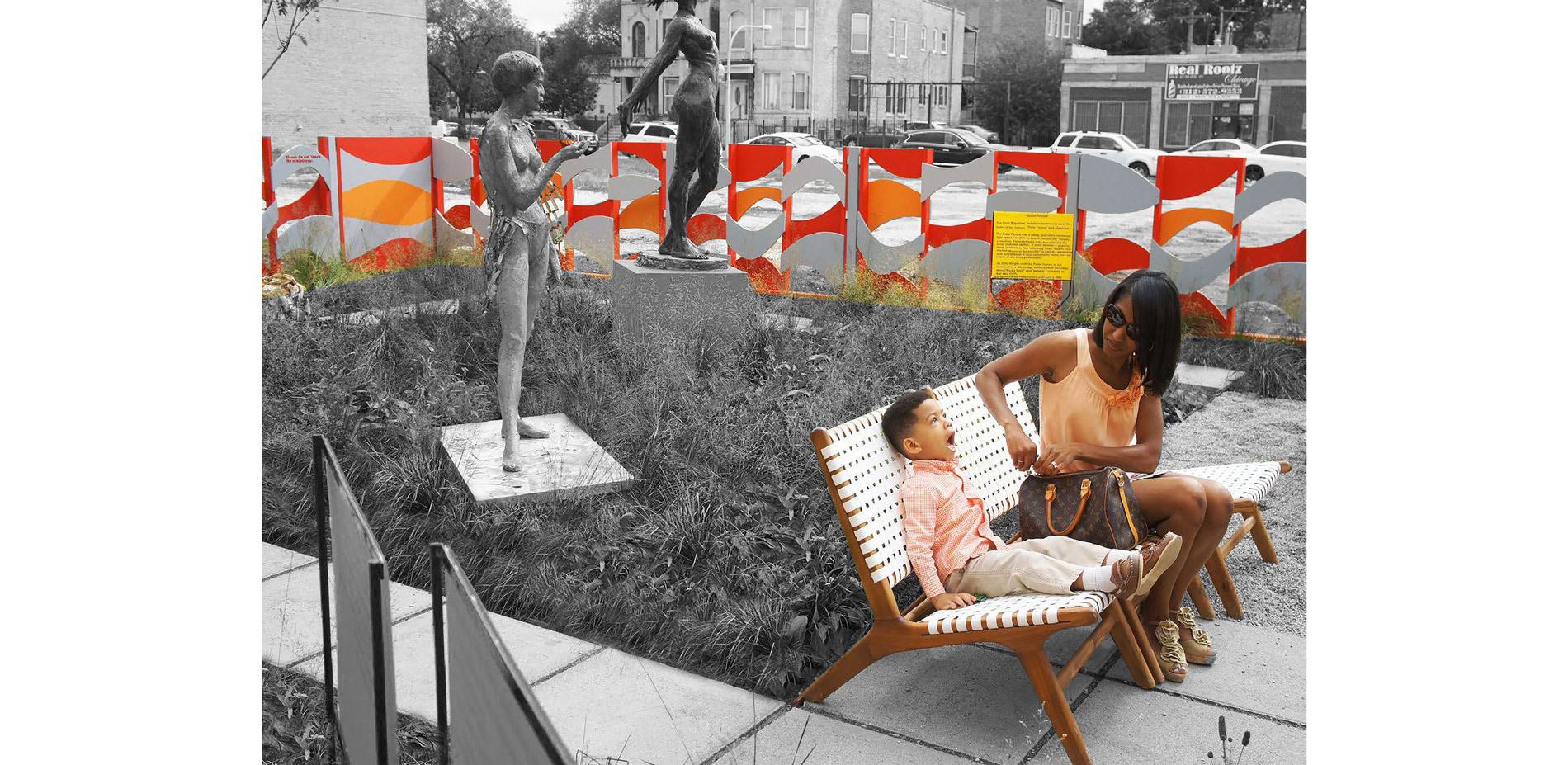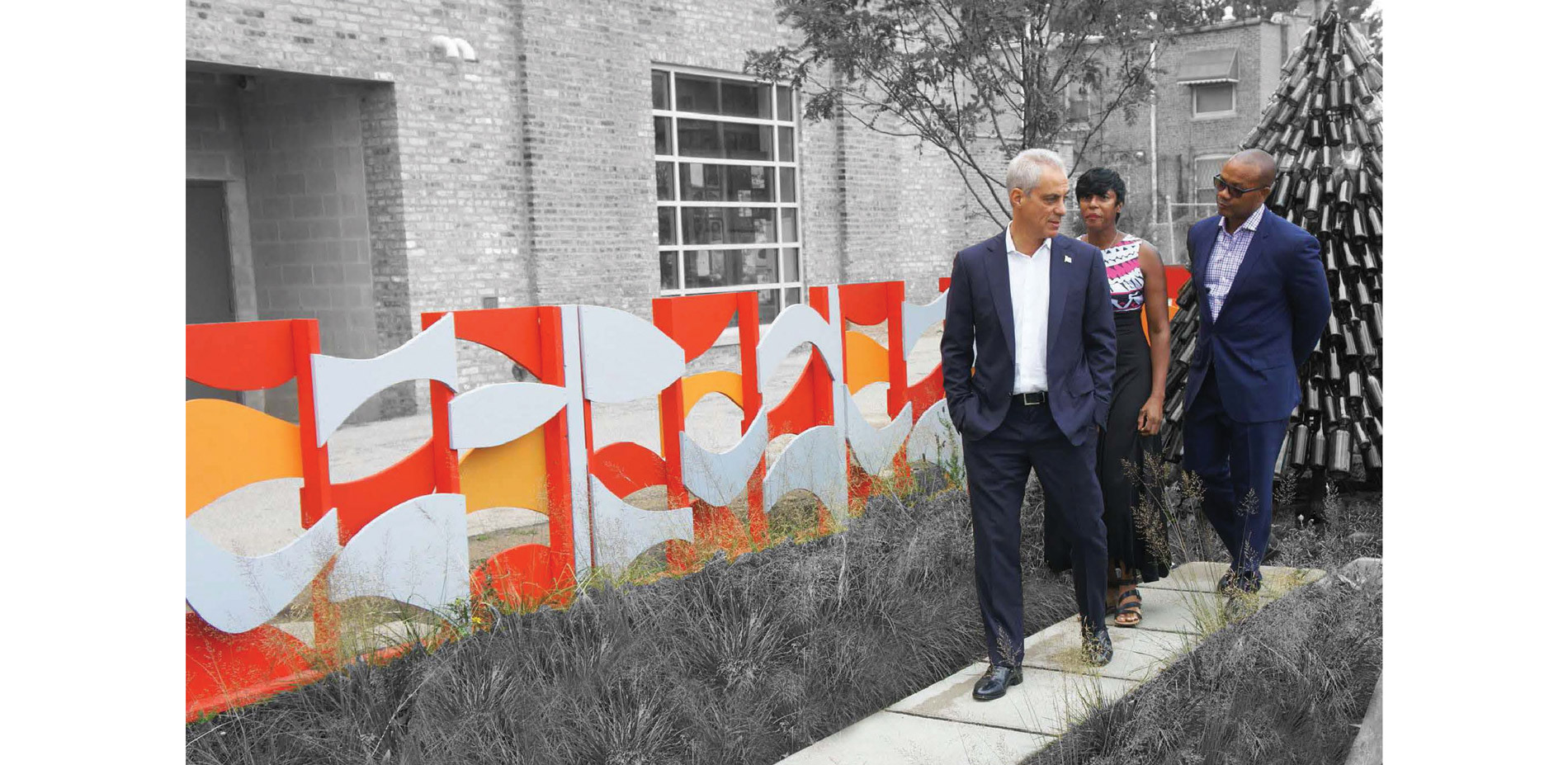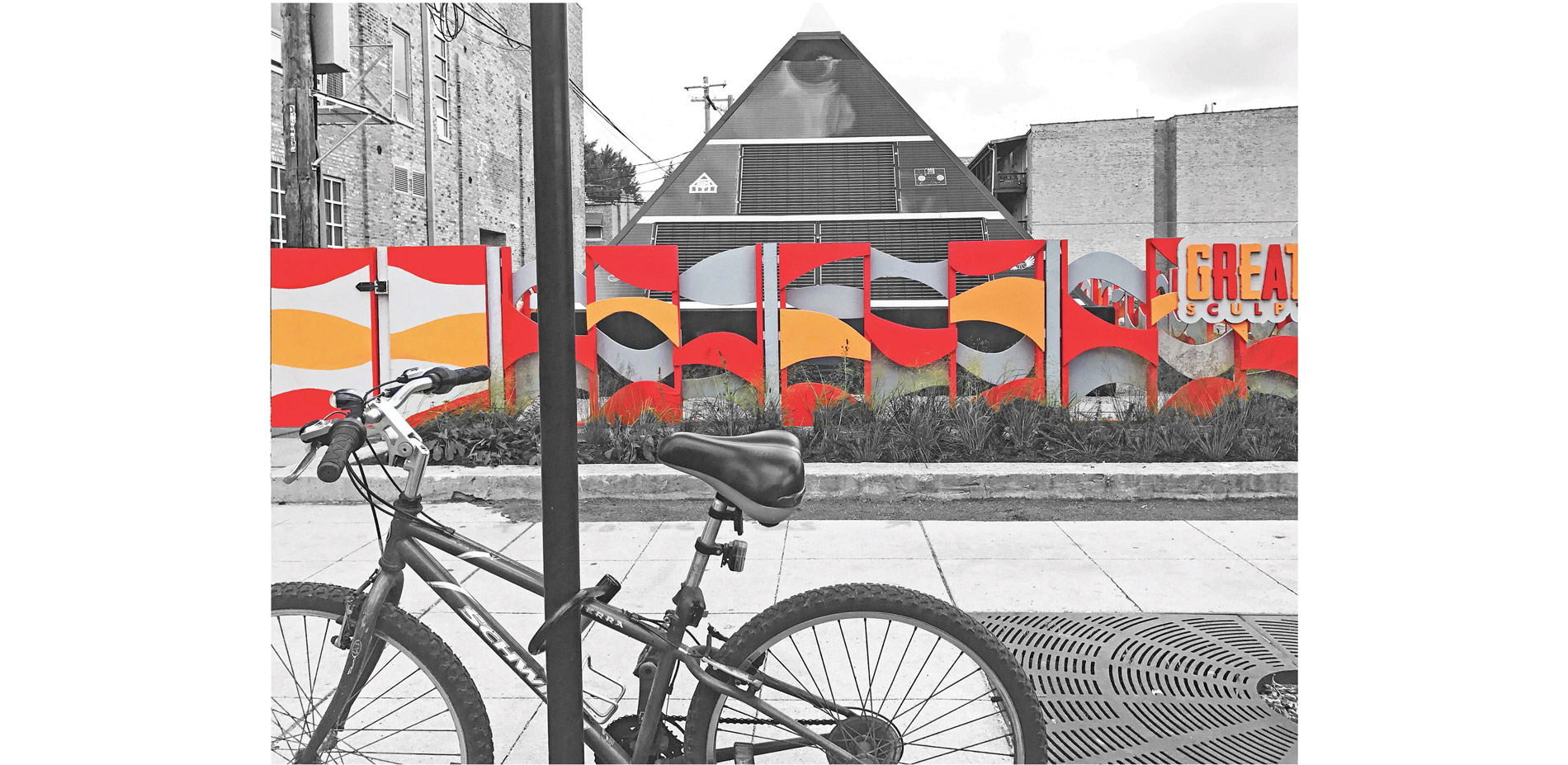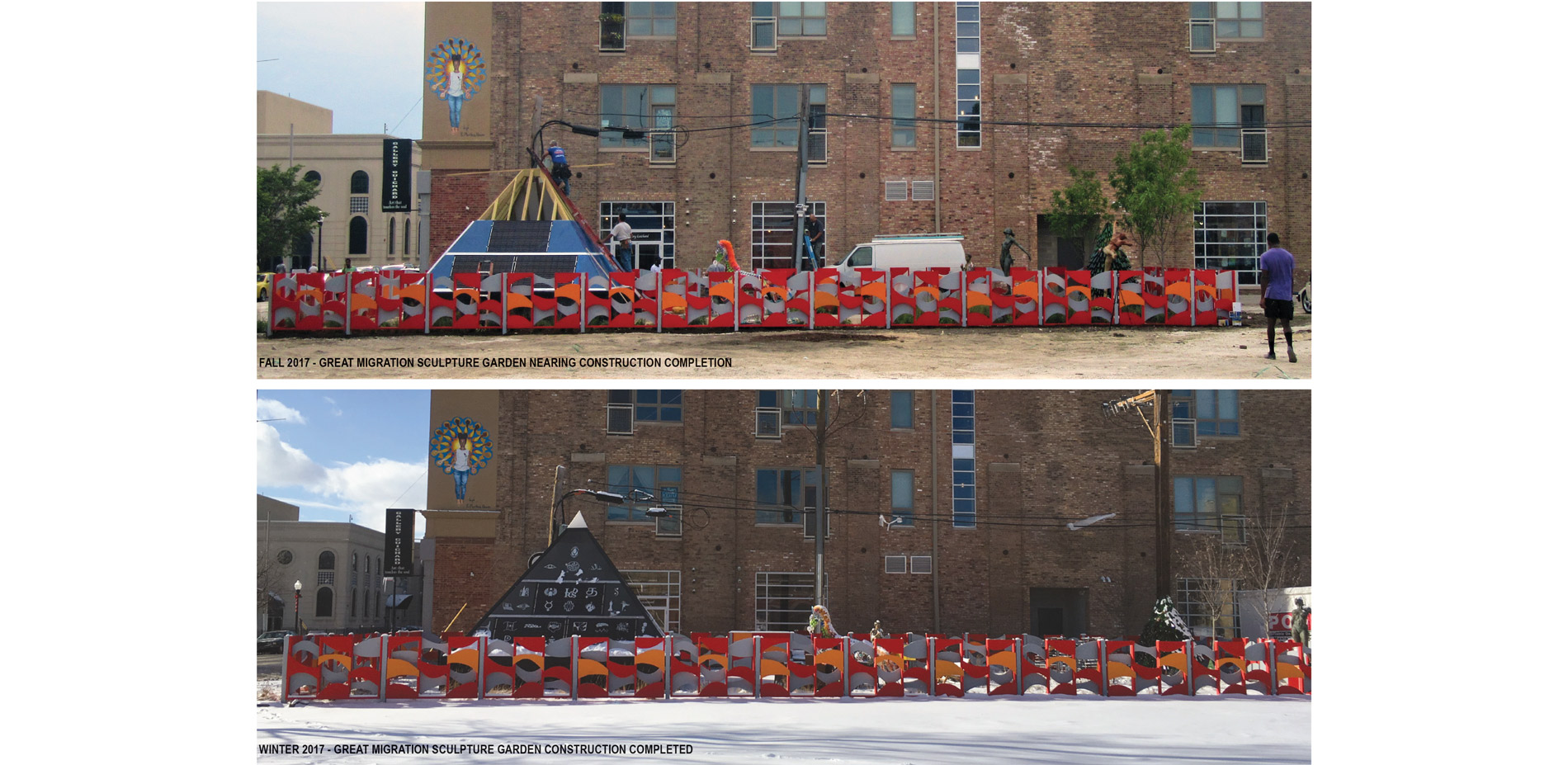Jazz Fence
HONOR AWARD
Student Community Service Award
Chicago, IL, USA | Team: Jiaming Sun, Student ASLA; Yu Si, Student ASLA | Faculty Advisors: Ron Henderson, FASLA
Illinois Institute of Technology
The Jazz Fence is beautifully executed. I love the fabrication; there is a clear historical relationship; there is community service.
- 2018 Awards Jury
PROJECT STATEMENT
Jazz Fence encloses the Bronzeville neighborhood's new Great Migration Sculpture Garden and was designed and built by two students of Landscape Architecture in collaboration with community leaders, construction trades, neighborhood youth, and professional advisers. Jazz Fence was a design investigation of shadows, geometry, and color to augment the sculptural program of the garden which was constructed on a surplus site donated by the City of Chicago to the city's southside Bronzeville neighborhood.
The garden exemplifies the positive influence that arts and teamwork embody as paths for opportunity and passionate work for the neighborhood youth. With the help of high school students and artist from the community, the garden fence was fabricated of cutout shapes of marine-grade plywood, painted, and assembled on site with leadership by the Landscape Architecture students. The Jazz Fence is a visually striking contribution to a community-engaged project that transformed an abandoned site into a vibrant place for the neighborhood.
PROJECT NARRATIVE
Background
The Great Migration Sculpture Garden commemorates the great migration movement of six million African-American people out of the rural South to the urban North between the years of 1916 and 1970. Many of these millions settled in the Bronzeville neighborhood on Chicago's South Side. In the early 20th century, this neighborhood was known as the "Black Metropolis", one of the most significant concentrations of African-American businesses. The African-Americans also created a new way of bringing their culture and experiences - including influential contributions of jazz, gospel, and blues music - to American and global culture. The Great Migration Sculpture Garden is located on the site of the former Palm Tavern. Howard Reich, art critic for the Chicago Tribune, wrote, "It would be difficult to overestimate the (Palm Tavern's) role in nurturing black musical culture in Chicago and beyond. This was the place where ideas were exchanged, tunes discussed, and collaborations conceived." The Palm Tavern Club was once a hub for African-American musicians in Chicago when the city was dominant in shaping gospel, blues and jazz. The Jazz Fence amplifies this musical history with rhythmic and colorful patterns of cutout shapes that recall, but do not mimic, musical scores.
Project Partners
Gallery Guichard, in conjunction with the Purpose Foundation, received the formerly vacant lot from the City of Chicago to transform it into a garden gallery with rotating sculpture exhibits and community programming. This garden includes a commissioned solar pyramid by Nigerian-American and Chicago-based contemporary artist Shala - a leader in the art movement known as solar artwork - that features a collection of unique hieroglyphic basketballs, light bulbs, microphones, and other talismans of daily life in contemporary Chicago. In addition, a broad coalition of tradesmen, professional landscape architects, community volunteers, and neighborhood youth coalesced to construct the garden in the Summer of 2017. The garden was dedicated on August 21, 2017 - the day of the solar eclipse.
Design Process
The University was approached by Gallery Guichard and the Purpose Foundation for expertise in landscapes and gardens. This inquiry led to two graduate students contributing their substantial design and construction expertise to re-envisioning the fence that encloses the garden - a fence that was initially a common pre-fabricated black metal fence from a national home supply chain store. The students identified the fence as a significant design opportunity and agreed to assume the responsibility for this highly visible and important part of the Great Migration Sculpture Garden.
A series of drawings and models produced two options to construct Jazz Fence with a zero-waste strategy of cutout pieces based on 4 feet by 8 feet sheets of marine-grade plywood. Option 1 used straight linear cuts on the table saw with each piece using the entire plywood sheet width of four feet. Option 2 deployed curvilinear cuts on the band saw to produce numerous cutouts at a width of 2 feet which still allowed full use of each plywood sheet. The cutout pieces in both options were organized in two repeating modular panels six feet long and four feet high. The modular panels were then installed on 4x4 wooden posts set in a 2-foot deep hole with a slump footing. After meeting with the community and benefactors, Option 2 was selected for it's musical / rhythmic vitality.
A mock-up panel was fabricated in the university wood shop for reviewing by the Great Migration Sculpture Garden artists and owners. Curved pieces were cut by CNC router, painted with one coat of primer and two coats of exterior grade white paint, and then screwed on pre-primed vertical frames. This modular panel was then attached to the square section wooden posts. In the mock-up review meeting, there was considerable discussion on the porosity of openings could be smaller, and the white paint would show dirt. A consulting architecture professor also pointed out potential structural instability without a continuous horizontal ledger at the bottom of the Jazz Fence. Based on the comments, modifications were made on the mock-up panel. Inner layers were added to reduce the area of opening, a light gray paint was selected, and a level bottom ledger was added.
At this time, the fence was all one color - a light gray. The students developed a series of color studies giving substantial consideration of both African American culture and the surrounding built environment. There was immediate and unanimous enthusiasm when the students proposed vibrant and joyful colors of orange and red on the outer layer of the fence to amplify the hot colors of adjacent brick buildings. Light gray panels on the inner layer ground the Jazz Fence with the garden sculptures. Geometric shapes were delineated with routers and then these shapes were painted to continue the cutout geometries.
Construction Process
The site provided several constraints. First, concrete foundations of the late jazz bar remained. The project team, including the landscape architecture students, advocated to keep these foundations as a memory of the Tavern Club. It also was a significant cost savings to do so and the openings in the foundation also allowed shallow-sloped inclines that provided fully accessible entrance through the fence gates and into the Great Migration Sculpture Garden.
The second constraint was the modest sloping of the site that challenged the level and true configuration of the fence. With slight adjustments of the finish grade and careful installation of the fence posts, the modular panels were able to be installed level despite one foot of grade change across the site.
The fence was assembled, painted, and installed by the landscape architecture students with considerable contributions by a master carpenter and neighborhood youth. In the pop-up fabrication and painting workshop adjacent to the garden site, the landscape architecture students worked with Bronzeville youth to paint the carefully numbered pre-fabricated cutouts in red, orange and gray and assemble them into the two six-feet modules. After assembling all the modules, they were carried out to the site and installed on the pre-set 4x4 posts.
Conclusion
Jazz Fence is a vibrant and colorful design exploration of how to enclose an urban hortus conclusus with cultural resonance and construction economy.
